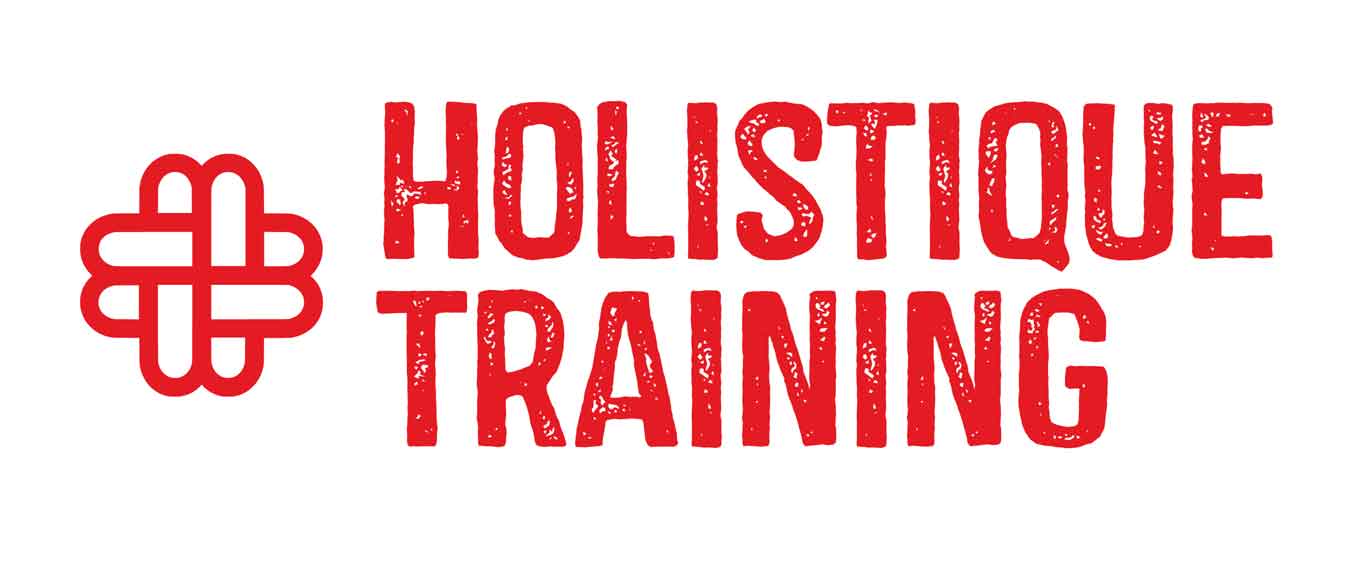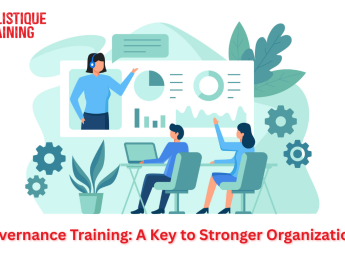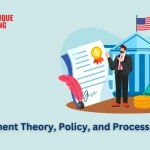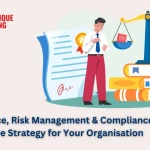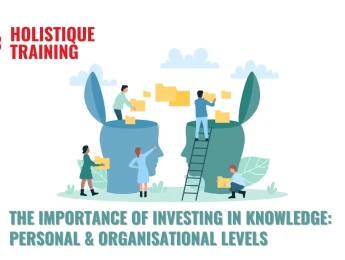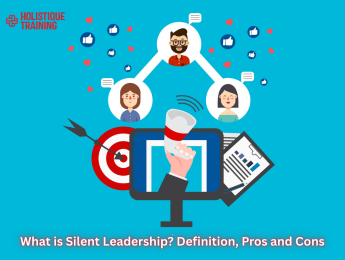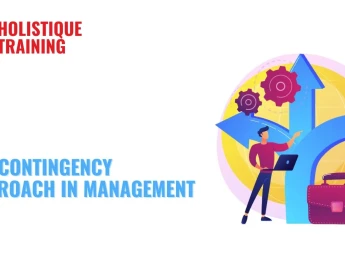- Table of Contents
- Introduction
- What Is Governance Training?
- The Link Between Governance and organisational Performance
- Common Governance Failures—and What Training Can Prevent
- Key Topics Covered in Effective Governance Programs
- Institutional Integrity and Ethical Leadership
- Compliance and Regulatory Awareness
- Internal Control Systems and Risk Management
- Performance Evaluation of Boards and Executives
- Sustainability and Long-Term Thinking
- Tailoring Governance Training for Different Stakeholders
- Governance in the Age of ESG and Digital Transformation
- Return on Investment (ROI) of Governance Training
- Choosing the Right Governance Training Program
- Conclusion
Introduction
In today's complex business environment, organisations across all sectors are under increasing scrutiny. The demand for transparency, accountability, and ethical conduct has never been greater. Stakeholders—including customers, investors, regulators, and the general public—are raising their expectations, and organisations that fall short face reputational, financial, and even legal risks. Simultaneously, the pace of change in regulations, technology, and social norms requires that companies stay agile and informed. Amid this evolving landscape, governance training emerges not as an optional investment but a strategic necessity.
Governance, in its essence, is about how decisions are made, who makes them, and how authority is exercised and monitored. Poor governance has been linked to countless corporate failures and scandals, while effective governance is consistently correlated with organisational resilience and success. However, governance principles are not instinctual—they must be taught, discussed, and practiced.
A well-structured governance training program equips individuals at all levels with the tools and frameworks necessary to navigate risks, make sound decisions, and align operations with both regulatory standards and ethical expectations. As the global landscape becomes more volatile and interconnected, investing in governance training isn't just about compliance—it's about ensuring long-term organisational viability. Institutions that take this seriously not only avoid costly missteps but also foster cultures of integrity and strategic clarity.
In this article, we will explore the strategic value of governance training across ten key areas. We begin by defining what governance training entails and its direct link to organisational performance. We’ll examine real-world governance failures and how training can mitigate such risks. The article also explores how to tailor training for different stakeholders, highlights the essential topics every governance program should cover, and discusses the growing relevance of ESG and digital transformation. We’ll evaluate the return on investment (ROI) of governance training, offer guidance on selecting the right program, and conclude with why governance education should be treated as a long-term strategic asset.
What Is Governance Training?
Governance training refers to structured learning programs that build knowledge, skills, and competencies related to corporate governance principles and practices. It encompasses a wide range of topics including board responsibilities, stakeholder rights, compliance standards, ethical frameworks, and strategic oversight. It is designed for executives, board members, and other organisational leaders who influence or enact governance processes.
At its core, governance training introduces the principles of transparency, accountability, responsibility, fairness, and sustainability. Participants learn about governing structures such as boards and committees, legal and regulatory obligations, risk management strategies, and reporting frameworks. It also explores how governance intersects with corporate culture, strategy, and social responsibility.
One of the key elements of governance training is helping participants understand their fiduciary duties—including duties of care, loyalty, and diligence. Training also emphasizes conflict of interest management, the importance of internal controls, and frameworks such as the OECD Principles of Corporate Governance.
Programs can be delivered through various formats: online modules, in-person workshops, executive seminars, or blended learning. Many reputable institutions such as the International Finance Corporation (IFC) and Institute of Directors (IOD) offer accredited courses tailored to various industries and organisational levels.
Whether an organisation operates in the private sector, public service, or non-profit space, governance training ensures that leaders are well-equipped to handle the complexities of modern oversight. It is not only about knowing the rules—but understanding the intent behind them and how to apply them in diverse, dynamic contexts.
The Link Between Governance and organisational Performance
Strong governance is a proven driver of organisational performance. Companies that demonstrate robust governance frameworks often experience improved financial results, enhanced operational efficiency, and stronger reputational capital. Governance establishes clear roles, responsibilities, and accountability systems—factors that contribute directly to strategic alignment and sound decision-making.
According to a 2023 study by McKinsey & Company, companies with high governance maturity scores outperformed their industry peers by 15% in terms of shareholder return over a five-year period. The study emphasized that governance quality was a more consistent predictor of success than even market conditions or company size.
A well-governed organisation also tends to attract and retain high-quality investors. Investors view governance as a signal of transparency, risk management, and ethical conduct. In turn, this enhances capital access and reduces the cost of financing.
Beyond financial performance, governance plays a pivotal role in employee engagement and customer trust. Internally, clear governance reduces ambiguity, empowers teams, and encourages consistent performance evaluation.
In essence, governance acts as the organisational backbone. When leaders are trained to implement effective governance systems, they create cultures of performance, sustainability, and innovation. Training ensures that governance isn’t just a document—but a daily practice that permeates all levels of the organisation.
Common Governance Failures—and What Training Can Prevent
History is rife with examples of organisations that collapsed due to governance failures. From Enron to Wirecard, weak oversight, ethical lapses, and unchecked power have led to financial ruin, job losses, and loss of public trust. What’s common in these failures is not necessarily a lack of intelligence or resources—but a failure in governance culture and competence.
Governance training plays a critical role in preventing such collapses. For instance, training helps participants recognize red flags early: such as excessive concentration of power, lack of board independence, poor risk management, and conflicts of interest. Moreover, it emphasizes the importance of whistleblower mechanisms, transparent reporting, and regular board evaluations.
The OECD and World Bank have both stressed the importance of training in promoting governance resilience, particularly in emerging economies and fast-growing organisations. Boards that receive regular governance education are more likely to challenge executive decisions, demand accountability, and ensure stakeholder interests are protected.
One practical example comes from a case study on Volkswagen’s emissions scandal, where lack of proper governance oversight allowed ethical and legal violations to persist. Post-scandal reforms included mandatory governance training for senior leaders to rebuild oversight capacity and public confidence.
Governance training can’t prevent all mistakes—but it significantly reduces systemic risk by equipping leaders with frameworks, tools, and ethical reflexes needed to navigate complexity and uncertainty.
Key Topics Covered in Effective Governance Programs
An effective governance training program must be comprehensive, addressing both foundational concepts and emerging trends. At its core, it should cover the five key pillars of governance: accountability, transparency, fairness, responsibility, and sustainability. However, to truly prepare leaders for modern governance challenges, programs must delve deeper into practical and strategic areas.
Here are the essential topics such programs should cover:
Institutional Integrity and Ethical Leadership
Training should emphasize the role of ethics in decision-making, reinforcing values such as honesty, objectivity, and independence. Case studies on ethical dilemmas provide participants with opportunities to practice judgment in complex scenarios.
Compliance and Regulatory Awareness
As regulations vary across jurisdictions and evolve rapidly—especially in areas like data protection, financial disclosure, and anti-corruption—leaders must stay informed and adaptable. Programs often include modules on international frameworks like the OECD guidelines, Sarbanes-Oxley Act, and ESG compliance protocols.
Internal Control Systems and Risk Management
Training should explain how internal audits, reporting lines, and control mechanisms function to prevent fraud and inefficiency. Participants learn how to implement enterprise risk management (ERM) and align it with organisational goals.
Performance Evaluation of Boards and Executives
Governance programs often include tools for assessing board effectiveness, succession planning, and executive compensation alignment, helping to reinforce accountability at the highest levels.
Sustainability and Long-Term Thinking
Programs now incorporate Environmental, Social, and Governance (ESG) factors, teaching leaders how to align profit with purpose and build strategies that are future-proof.
According to the Chartered Governance Institute, organisations that train on these core topics report 25% stronger board cohesion and decision-making efficiency.
Tailoring Governance Training for Different Stakeholders
Governance training is most effective when customized for the unique responsibilities of different organisational roles. A one-size-fits-all approach is inadequate given the varied functions, risk exposures, and decision-making powers across an organisation.
Board members require training that focuses on fiduciary duties, board dynamics, strategy oversight, and CEO evaluation. Their role is to challenge management decisions and ensure long-term shareholder value. For them, governance training should include case studies on board failures, ethical dilemmas, and financial stewardship.
Executives and senior managers need governance education that ties daily operations to governance principles. Topics such as compliance integration, operational risk management, and cross-department accountability are crucial. Training for this group should also cover how governance influences corporate culture, innovation, and strategic planning.
Middle managers and functional heads benefit from governance insights on internal controls, reporting lines, and escalation procedures. Their training should focus on practical implementation of governance policies and navigating internal politics.
Risk managers, HR leaders, and compliance officers require technical and regulatory updates, especially as laws evolve. For these professionals, governance training should address legal compliance, data protection, and the implementation of ethics programs.
Tailored governance training ensures relevance, engagement, and retention. It enables every level of the organisation to play their part in building and sustaining a high-governance environment.
Governance in the Age of ESG and Digital Transformation
The modern governance landscape is being transformed by two seismic forces: the rise of ESG (Environmental, Social, and Governance) standards and digital transformation. Together, these shifts demand a rethinking of traditional governance practices and competencies.
First, the ESG movement has elevated the expectations placed on corporate boards and executives. Governance is no longer judged solely by financial stewardship but by how an organisation addresses climate change, labor rights, diversity, supply chain ethics, and more. Governance training must therefore prepare leaders to navigate stakeholder activism, ESG reporting standards, and long-term sustainability planning.
Simultaneously, digital transformation is redefining how governance is executed. From AI-driven decision-making tools to blockchain-based recordkeeping, new technologies present opportunities and risks. Training programs must incorporate digital literacy, cybersecurity governance, and the ethical implications of automation and data use.
Moreover, virtual boardrooms, remote oversight, and tech-driven compliance systems are reshaping board dynamics. Effective governance now requires fluency not only in legal frameworks but in digital environments. The World Economic Forum warns that boards that lack digital awareness are vulnerable to major strategic blind spots. Courses should include ESG integration strategies, cyber risk scenarios, and emerging tech ethics modules. Participants must learn how to balance innovation with regulation—ensuring that digital advancement aligns with societal values and stakeholder trust.
Return on Investment (ROI) of Governance Training
Investing in governance training is not just a compliance cost—it’s a strategic investment with measurable returns. organisations that embed structured governance learning into their leadership development often experience enhanced risk mitigation, operational resilience, and stakeholder trust.
Another dimension of ROI lies in reputation management. Trust is a currency in today's business world, and it is earned through consistent, principled behavior. When leaders are trained to act with integrity and transparency, reputational risks decrease—and customer and investor loyalty increases.
Moreover, governance training enhances decision-making quality. Participants develop structured frameworks for analyzing complex situations, considering both short-term outcomes and long-term impact. This leads to fewer strategic missteps and better alignment between mission and execution.
In the talent domain, governance-focused organisations often see improvements in employee engagement and retention. A workplace that values accountability and ethical leadership fosters a positive culture, attracting purpose-driven talent.
Financially, the cost of a robust training program is modest compared to the cost of regulatory penalties, litigation, or crisis recovery. A single governance-related scandal can cost a firm millions in legal fees, lost market share, and reputational damage.
Ultimately, governance training pays dividends across the organisation—reducing risk, boosting performance, and safeguarding the enterprise's future.
Choosing the Right Governance Training Program
Selecting the right governance training program is critical to achieving the intended impact. With a growing number of providers offering courses, organisations must assess programs based on relevance, credibility, and adaptability.
First, look for programs with recognized accreditation or partnerships with governance institutes. Reputable providers include the Institute of Corporate Directors (ICD), Harvard Kennedy School, INSEAD, and Holistique Training. These organisations often provide globally recognized frameworks and case studies rooted in real-world challenges.
Second, the program must be industry-specific. Governance in a healthcare organisation differs significantly from governance in a fintech startup. Look for curriculum that tailors examples, risks, and regulations to your sector.
Third, delivery format matters. Choose programs that offer interactive workshops, board simulations, or scenario-based learning—not just lectures or PDFs. E-learning modules with quizzes and discussion boards also enhance engagement, especially for geographically dispersed teams.
Fourth, review the expertise of trainers. Facilitators should have practical governance experience—former board members, regulators, or governance consultants—not just academic credentials.
Fifth, ensure the program includes post-training resources such as governance toolkits, policy templates, and follow-up webinars. This enables long-term learning and implementation.
Lastly, measure training success through KPIs such as participation rates, policy adoption, and board evaluation outcomes. Governance training is most effective when embedded into leadership development, onboarding, and annual strategy reviews.
Conclusion
Governance training is no longer a formality—it is a cornerstone of modern organisational resilience and performance. As this article has shown, the benefits of investing in governance education extend far beyond compliance. It strengthens decision-making, protects against risk, builds stakeholder trust, and enhances long-term sustainability.
In an era defined by complexity—whether through shifting regulatory landscapes, technological disruption, or growing ESG demands—organisations need leaders who are not just technically skilled, but ethically grounded and governance-minded. Training provides this foundation, shaping individuals into stewards of integrity and architects of organisational value.
Governance failures can be catastrophic, but they are also preventable. With the right education, boards and executives can foster cultures that prioritize ethical behavior, strategic oversight, and inclusive leadership. And in doing so, they unlock the full potential of their people, systems, and missions.
Forward-looking organisations view governance training not as a sunk cost, but as a strategic investment—one that yields long-term returns across every dimension of performance.
If your organisation is ready to elevate its governance capacity, consider exploring certified, sector-specific training programs tailored to your leadership needs. Start with providers that combine global standards with practical insight, and make governance excellence part of your long-term strategy.
Strong governance doesn't happen by accident—it starts with informed, empowered leadership.
